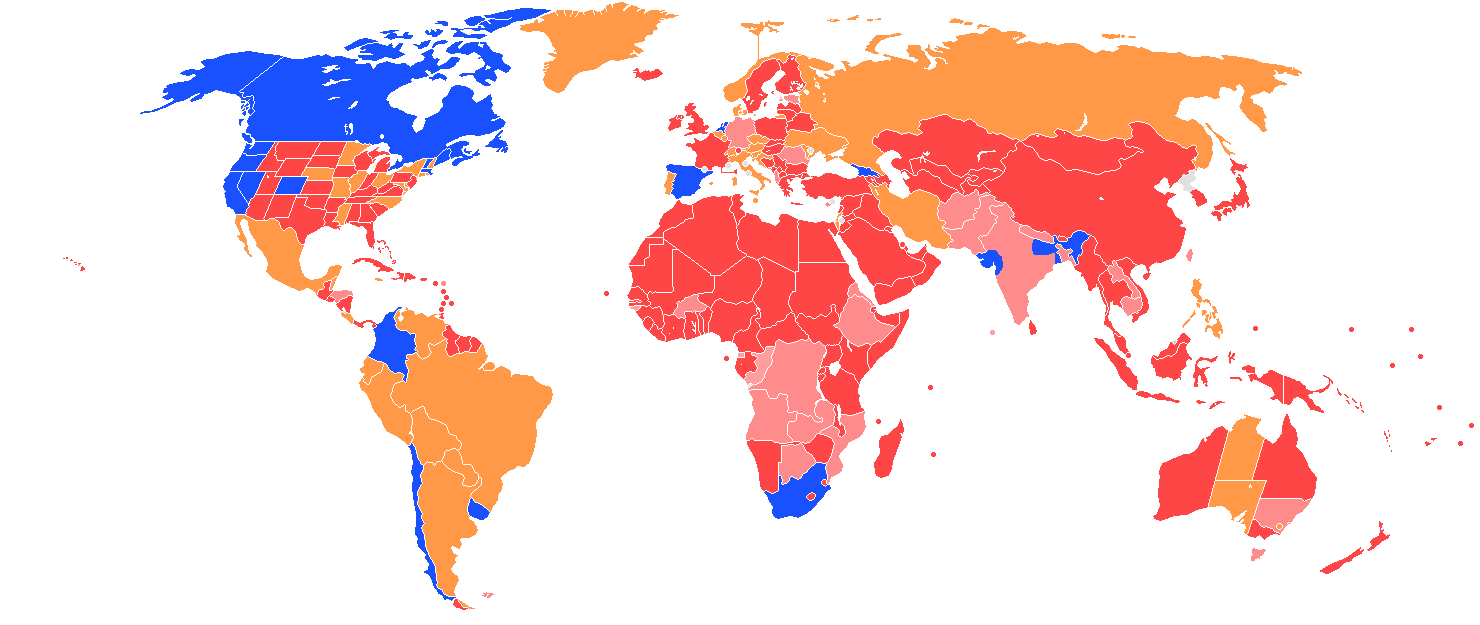What are the Marihuana for Medical Purposes Regulations (MMPR)?
The History of Canadian Cannabis Legalization
In July 2013, Health Canada enacted the Marihuana for Medical Purposes Regulations (MMPR). These regulations pertained to the production and distribution of medical cannabis in Canada for a licensed cannabis producer.
Prior to the Marihuana for Medical Purposes Regulations, Canada had a 2001 program called Marihuana Medical Access Regulations (MMAR). That program was ended in 2014 because it left openings fro abuse. MMAR was the first Canadian medical marijuana program to clearly define the circumstances and the manner in which access to cannabis for medical purposes would be permitted.
Marihuana for Medical Purposes Regulations also fell into legal issues when it was ruled unconstitutional by federal courts. The issue with MMPR was that patients were not allowed to grow their own medicine. The act that replaced MMPR was the Access to Cannabis for Medical Purposes Regulations (ACMPR).
The Access to Cannabis for Medical Purposes Regulations was not the last of the changes to Canadian cannabis law. In 2018 Canada took up the Cannabis Act (or Bill C-45) which federally legalized recreational cannabis.
Canadian Cannabis Law Timeline:
- 2001: MMAR (Marihuana Medical Access Regulations) - limited medical access
- 2013: MMPR (Marihuana for Medical Purposes Regulations) - commercial production begins
- 2016: ACMPR (Access to Cannabis for Medical Purposes Regulations) - home growing restored
- 2018: Cannabis Act (Bill C-45) - full recreational legalization
- 2019: Cannabis 2.0 - edibles and concentrates legalized
Marihuana for Medical Purposes Regulations treats cannabis like a narcotic pharmaceutical.
How Marihuana for Medical Purposes Regulations Evolved Canadian Cannabis Law
Marihuana for Medical Purposes Regulations treats cannabis like a narcotic pharmaceutical. This means that producers and distributors of cannabis need to follow stringent guidelines for how they produce cannabis and conduct business.
Dried flower was originally the only cannabis product considered by the Marihuana for Medical Purposes Regulations. After some amendments, edibles, cannabis products and cannabis extracts are now also covered by Canadian cannabis laws.
The Access to Cannabis for Medical Purposes Regulations that replaced MMPR and MMAR considered both programs as a basis. It combined the personal cultivation provisions of the MMAR with the practical guidance of the MMPR.

Recreational and Medical Cannabis Limits
Under the Cannabis Act adults are permitted to carry up to 30 grams of cannabis flower. When it comes to other types of cannabis Canada allows the following:
- 150 grams of fresh cannabis
- 450 grams of edibles
- 2100 grams of liquid products
- 7.5 grams of concentrates
- 30 cannabis plant seeds
Canada has both medical and recreational cannabis legalization now. Medical marijuana patients are allowed to carry an additional 150 grams of cannabis flower.
Growing Cannabis in Canada
The most exciting part of Canadian cannabis legalization is the opportunities it brings to the business world. Health Canada offers cultivation licensing options for large producers and for micro-cultivation licenses.
Canada is also preparing to offer support through cannabis funding to its cannabis businesses, including banking, cannabis business planning, and assistance to pursue international cannabis trade.
Final Thoughts on Marihuana for Medical Purposes Regulations
Canadians have experience a lot of change in cannabis laws over the last two decades. Their laws have rapidly adapted to the changing views on cannabis. Thanks to this, Canada is leading the world in cannabis regulation and legalization. Their federal programs have created a model system that has created bountiful business opportunities in Canada and abroad.
Find Out More
Let's discuss your project in order to customize a plan that best supports your needs. Find out more on our Seed for Success program overview.
Recommended For You
Revolutionizing Efficiency: How Production Management Software Transforms Creative Industries into Powerhouses
January 2, 2026Unlock the Secret to Thriving Greenery: Discover the Best Organic Fertilizer for Seedlings Today!
December 30, 2025Cannabis Conventions: Where Innovation Meets Culture in the Heart of the Green Revolution
December 29, 2025About GrowerIQ
GrowerIQ is changing the way producers use software - transforming a regulatory requirement into a robust platform to learn, analyze, and improve performance.
To find out more about GrowerIQ and how we can help, fill out the form to the right, start a chat, or contact us.
